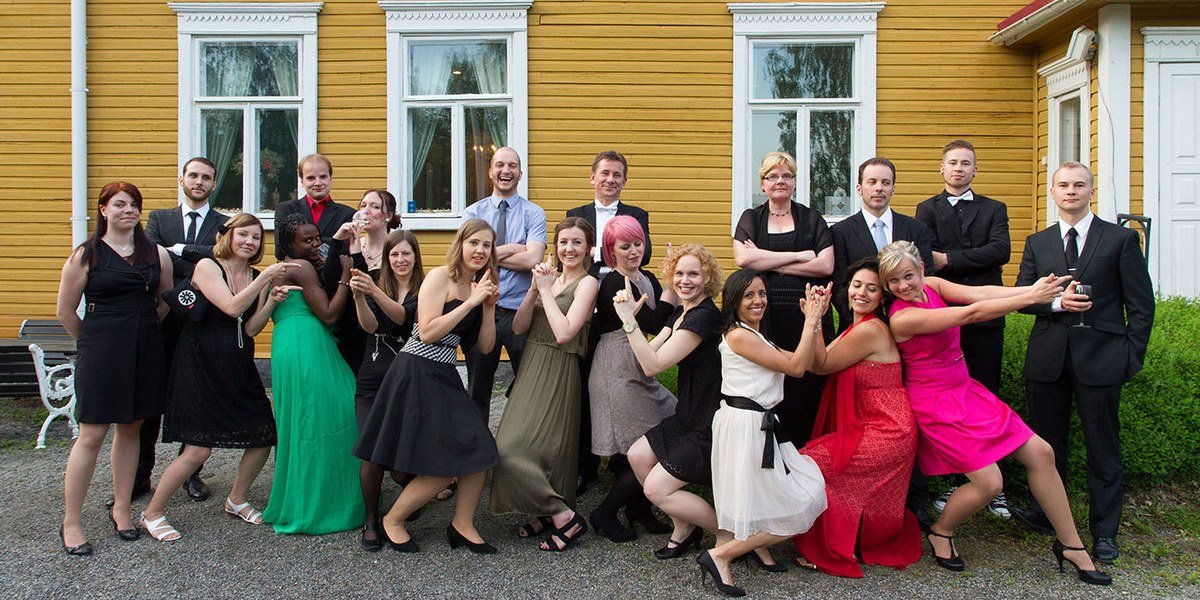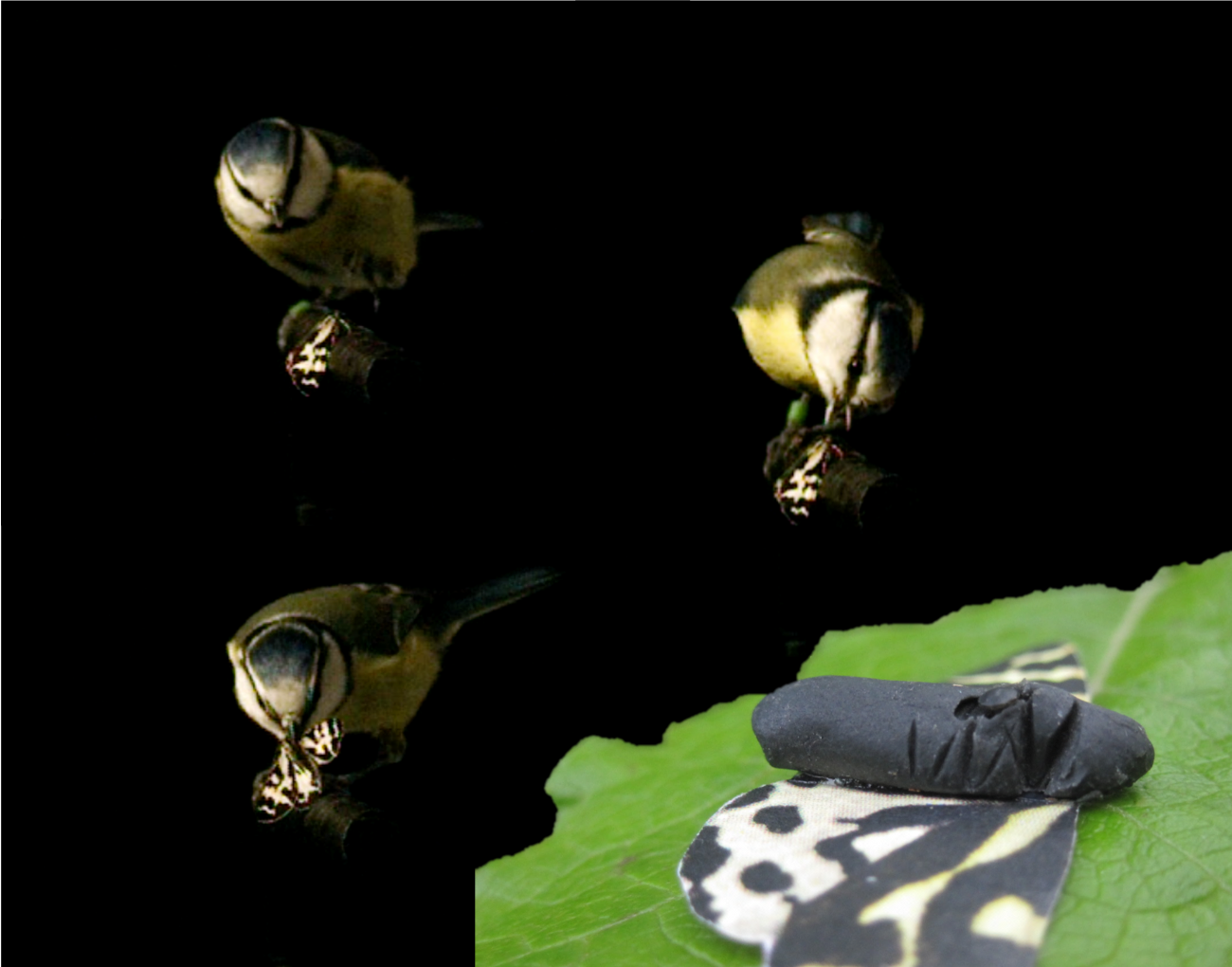Mission: Impossible – Moth Protocol
Your Mission, if you Choose to Accept it…
Consider the weather over a continent like Eurasia. Some places are hot, some places are cold. Patches of snow, rain, cloud and empty sky sweep across the landscape. Weather systems are clear to the senses and scientific instruments, and we can create a precise representation of how things look at any one time. When we put it all together, we see a dynamic mosaic of conditions and events across the range.
Example of a European climate mosaic, showing different weather conditions in different regions. Image Credit: XL3, CC BY-SA 3.0, via Wikimedia Commons
Now consider natural selection over a continent like Eurasia. The dynamic pressures of natural selection can create a mosaic of evolutionary conditions, just as dynamic air molecules create a mosaic of weather conditions. However, the idea of an evolutionary mosaic is mostly theoretical. Unlike with the weather, it is difficult to observe evolutionary forces in action because they are hidden within countless interactions and play out over generations. Thus, observing a natural evolutionary mosaic at massive scale is a challenging task that requires expertise, skill and elegant solutions.
It’s the kind of job on par with the tactical operations of Ethan Hunt and the Impossible Missions Force.
The IMF Team. From Mission: Impossible – Fallout, copyright Paramount Pictures. Image displayed under Fair Use.
But this is no covert spy-game. This is science, and it requires a different kind of elite team.
The PP-IG team, circa. 2016
The mission, to capture an evolutionary mosaic in data-form, was accepted by a crack team from the University of Jyväskylä in Finland. This veteran group of researchers, led by Dr. Johanna Mappes, form the world-renowned Predator-Prey Interactions Group (PP-IG) and they have spent years chasing the Wood Tiger Moth (Arctia plantaginis) across the northern hemisphere. Having become familiar with this system, the group hypothesized that an evolutionary mosaic could be in action.
But conceiving the idea was the easy part. Capturing it with rigorous experiments and reliable data is where it gets tricky.
Identifying the Target
The suspected mosaic applies to the colour of the moth’s wings and the predators that eat the moths.
Wood Tiger Moths defend themselves from predators with distasteful toxins, and advertise as such with warning colours (i.e. aposematic colouration). This warning signal comes in white, yellow and red flavours, any of which could work to deter predators.
All else being equal, natural selection directs evolution to converge on a single colour. This is because prey species benefit by not being eaten, and predators benefit by avoiding toxic prey. Meeting these conditions comes down to how well predators can learn the warning signal, which is easier when there is only one colour to learn. In other words, predators tend to eat moths with a novel colour (because they haven’t learned to avoid them yet), but avoid moths with a common colour (because they’re more likely to have been poisoned in the past). So basically, we expect a population with multiple warning colours to become a population with a single colour.
But this is not the case with the Wood Tiger Moth, since there are three different colour morphs across its range. As the illustration shows, there is substantial variation between countries in moth coloration. Firstly, all the moths in Scotland are of the yellow variety, whilst almost every moth is red in Georgia. These are the kinds of patterns we expect to see. By contrast, Finland and Estonia show multiple colours within the same population, which defies the logic of warning signals and requires an explanation. Secondly, if there were a single ‘best signal’, we would expect the same signal everywhere. This is clearly not the case.
Frequencies of colour morphs in different locations across Eurasia. Image from the article, published by John Wiley & Sons, copyright The Authors.
The hunch is that this variation reflects a geographic mosaic of selection, driven by predation from birds. So the master plan was to place thousands of artificial moths in a variety of natural habitats and record how often they get attacked by birds. By combining the information on attack rates with a survey of local bird communities, the PP-IG could hopefully generate a picture of an evolutionary mosaic.
Victory is Won with Production and Logistics
The project was planned to form the bulk of a PhD project, and candidate Katja Rönkä took point position for the mission. Although she was just a rookie at this stage, Katja was joined by an elite team of experienced field veterans and experimental researchers.
Together, the PP-IG planned the logistics of hitting four locations across Eurasia at once: Scotland, Finland, Estonia and Georgia. This wasn’t going to be straight-forward. The active period of the moths is short, giving only a limited time window to collect data. Furthermore, the moths are sparse and it’s difficult to track down the right habitats. Thus, the tactical logistics involved sending multiple teams to remote and mysterious areas across the continent in a race against the clock.
“One of the biggest challenges was logistics… So this means that the experiment needed substantial pre-planning… and money of course (which is always THE challenge in ecological studies).” – Dr. Johanna Mappes.
Drs Bibiana Rojas (left) and Katja Rönkä (right) with a bag of clipped model moth wings. Image Source: PP-IG
There was plenty of time to chew over doubts during the lead-up to the operation. The plan required over 6000 hand-crafted moth models, each one produced with the utmost care. This first phase demanded a massive industrial effort from the whole PP-IG, not just Rönkä’s team. The main job of the assembly line was to print convincing to-scale copies of moth wings, which then had to be cut out without leaving fingerprints (that could disrupt UV reflectance) or white parts (that destroy the illusion). The repetitive production line and the slick snipping of scissors set the perfect cadence for a wandering mind. During these times it was only natural to contemplate the enormity of the task ahead and everything that could go wrong. After all, nature is full of surprises…
Composite image of a predator-damaged moth model and attacks by avian predators. Photo Credits: Janne Valkonen and Sebastiano De Bona
No Plan Survives Contact…
The moth breeding system hit with the sudden impact of a storm and the teams mobilized for action, setting course to their respective locations.
The first stage of fieldwork was to seek out natural moth populations, chasing clues from museum records. These expeditions coursed through terrains both beautiful and perilous, each with their local delights and distractions.
Lone researcher in the ruins of Findlater Castle. Image courtesy of Emily Burdfield-Steel.
The mountainous roads of Georgia provided stunning scenery of rolling hills enshrouded in mists and vapours. But the harsh weather could wash away the roads, leaving expedition members fearing for their lives as they slipped past long, deadly drops. Meanwhile, team members in Scotland explored cliff-side castle ruins and marvelled at the dolphins below.
Once the locations were discovered, the models had to be placed just-so. “It was a combination of thinking like a moth to find the right type of habitats, but also thinking like a bird to set the artificial moth models to realistic spots… for them to see,” says Katja. Simultaneously, veteran birders like Ossi Nokelainen pulled long-haul drives between field sites to conduct surveys of local bird populations.
Ossi Nokelainen contending with travel between field sites in Georgia. Image Credit: PP-IG.
But problems in the field recall the adage that no plans survive contact with reality. A group of foreigners carrying binoculars and placing objects along transects invites suspicion. In most cases, locals were curious and excited to have a scientific team wandering around their lands. This was a great relief and pleasure to Katja, who was experiencing her first research trips abroad.
A variety of animals, like this Georgian cow, kept researchers company in the field. Image courtesy of Bibiana Rojas.
But in one case, a transect in Georgia happened to follow an underground gas line, and the researchers were apprehended by local military officials. The team was then interrogated. “Having our passports taken by the military was also somewhat nerve-wracking, despite having a local with us explaining what was going on,” says Katja. In another case, all the moth models went missing, but some detective work tracked them down to some local children who had found these weird artifacts and collected them into buckets.
Misty Georgian roads. Image courtesy of Bibiana Rojas.
Despite such setbacks, the skill, experience and grit of the team always prevailed. This wasn’t the first operation for most of the researchers, and they had plenty of assets to call on.
“We also had the *Abashidze family hosting us in Georgia, cooking us excellent breakfasts and dinner, which helped us last all day in the mountains amongst wild-roaming cattle, sheep, guard dogs and mules.” – Dr. Katja Rönkä (* names changed to protect the innocent)
Target Captured
Tensions were high when everyone was out in the field, given the fickleness of the fates. But an expert team can make even the trickiest situations seem easy. “One of the best moments for me was when the experiment was finished, everybody was back home safe and nothing major went wrong. Kind of a victory feeling: we did it!” says Dr. Mappes. A huge collective sigh of relief rippled through the team. Another job well done. Another plan comes together. The first taste of victory.
The second taste of victory came when analysing the data. “Ecological research can take a long time, sometimes years… it almost always brings surprises because we are dealing with living, changing entities. The moment when you are analysing the data and suddenly seeing the pattern on your screen… is always emotional,” says Dr. Mappes. There can be years in between an idea and its confirmation. But here, in the data they had collected: clear patterns of an evolutionary mosaic. Pay-dirt!
Evolutionary mosaic of the Wood Tiger Moth. The border of each box gives the ‘heat’ of selection, which corresponds with the intensity of predation and the differential survival of morphs. This selection differential is also represented by the relative heights of the colour morphs, with higher morphs surviving better than lower morphs. The influence of predators is given by coloured lines that represent attack rates (red = high, orange = medium, blue = low) from communities dominated by tits and dunnocks (on the right) or finches, warblers and flycatchers (on the left). The arrows connecting Finnish and Estonian boxes represent gene flow.
Weather mosaics can be characterized by hot and cold bodies of air, whilst evolutionary mosaics can be characterized by hot and cold spots of selective dynamics. Here we see a hot spot in Scotland, with high levels of predation against rare morphs. By contrast, Estonia is much colder because the moths were seldom attacked. In between these extremes are warm zones in Finland and Georgia.
Just as with the wind and weather, the local (fitness) landscape can have a huge effect on shaping dominant conditions. This comes down to which morph is the most common at each location. In essence, the most common morphs have an advantage over rare morphs, but which morphs are common or rare depends on the place. Hence, Scotland is a hostile place for red and white morphs but a good place for yellows. Alternatively, yellow moths are attacked in Finland, whilst reds and whites fare better.
The predator communities are the ones doing the attacking, and their behaviour also depends on the place. For example, common morphs were attacked more frequently by tit-biased communities in Scotland and Finland, but in Georgia they were attacked by communities dominated by flycatchers, finches and warblers. The point is that the relationship between moths and predators was different in each place, creating a mosaic of different evolutionary conditions.
The final component of this mosaic is the degree of mixing between populations. In this range, Finland and Estonia have a lot of gene flow between them, whilst Georgia and Scotland are more isolated. Thus, mixing between Finnish and Estonian moth populations likely keeps their diversity up compared to the isolated Scottish and Georgian populations.
Putting all these components together illustrates an ‘evolutionary weather map’ for the wood tiger moth and its predators. Natural selection works differently at each location due to different interaction patterns between predator and prey. This allows the diversity of colours in the Wood Tiger Moth to flourish across a geographic range, despite the pressure for it to diminish within each location.
Debrief
“The geographic mosaic theory of coevolution is one of the most influential recent conceptual breakthroughs in evolutionary ecology, but often really hard to test in practice because it always requires a detailed analysis of traits under selection from multiple locations. Our study emphasizes that indeed the strength and direction of selection can vary among locations and if we take a snap-shot of one location only, we may lose the big picture.” – Dr. Johanna Mappes
A PP-IG Team celebrating victory in the Finnish forest. Image Credit: PP-IG.
Since this operation, the team members have moved on to do new things. Katja earned her Ph.D with flying colours. But each member of the old crew continues to champion the importance of large-scale field studies in ecology. It’s one thing to build theoretical models and test them in laboratory conditions, but there’s no alternative to witnessing predictions stand true in natural conditions. Ecological science is hollow without the field studies that put everything into context.
But if you’re going to do fieldwork of this magnitude, make sure you have the right team. Katja says, “Johanna Mappes’s team is exceptionally skilled in experimental design and working in the field. A field experiment of this scale would never have been possible without their experience and ability to work in challenging conditions.” Dr Mappes adds, “I love my team! They all are fantastic. Everybody was super-committed to this task. I know that there were doubts if it was going to pay off, but people still gave their everything.”
Even so, just as with covert spy missions, the capabilities of the people on the ground only count for something with a solid backing of logistics. So also make sure you have an expert logistician on your side. And lots of money!
READ THE ORIGINAL ARTICLE HERE:
Rönkä, K., Valkonen, J.K., Nokelainen, O., Rojas, B., Gordon, S., Burdfield‐Steel, E. and Mappes, J. (2020), Geographic mosaic of selection by avian predators on hindwing warning colour in a polymorphic aposematic moth. Ecol Lett, 23: 1654-1663. doi:10.1111/ele.13597












